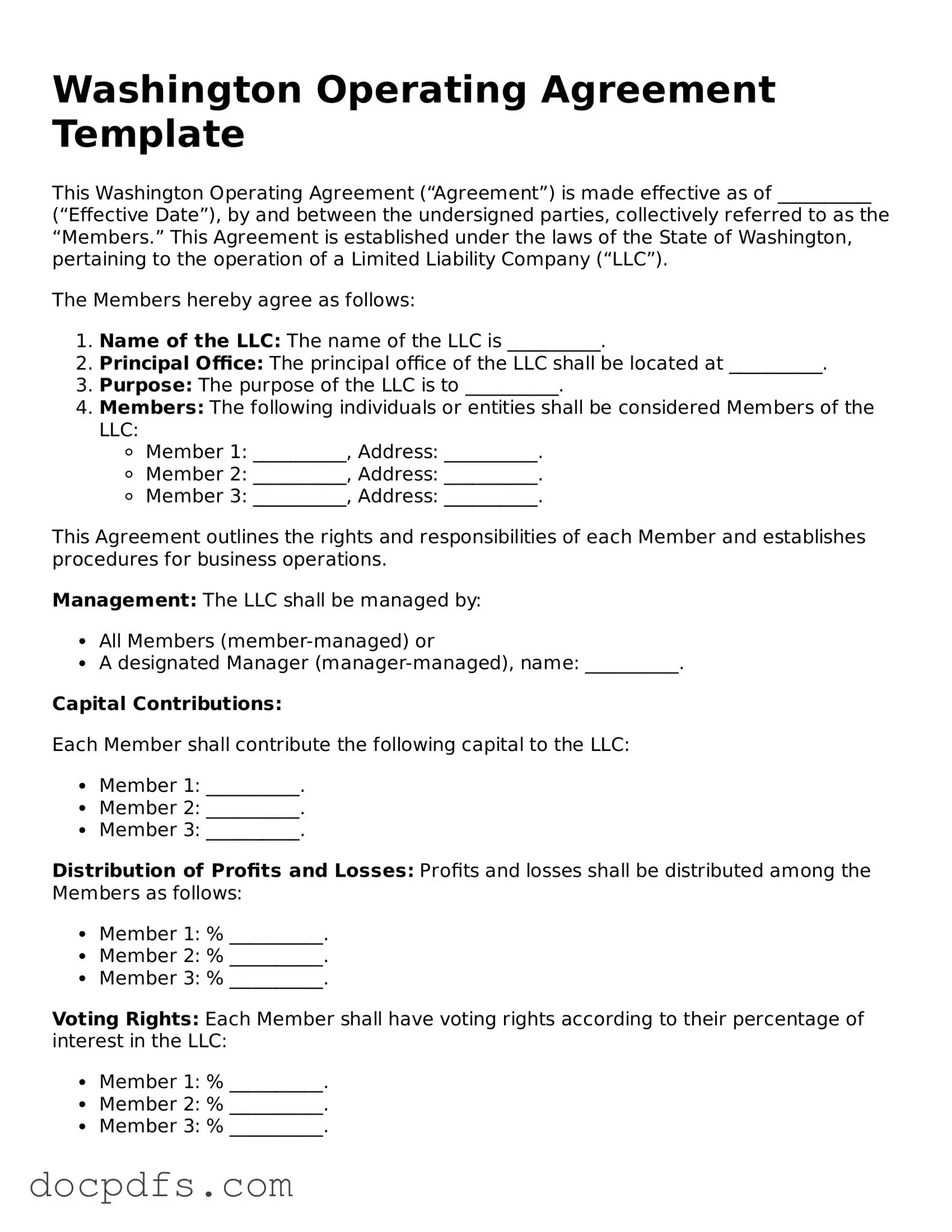What is a Washington Operating Agreement?
A Washington Operating Agreement is a legal document that outlines the management structure and operational procedures of a limited liability company (LLC) in Washington State. It serves as an internal guide for the members of the LLC, detailing their rights, responsibilities, and the rules governing the company.
Is an Operating Agreement required in Washington?
No, Washington does not legally require LLCs to have an Operating Agreement. However, having one is highly recommended. It helps clarify the roles of members and can prevent disputes in the future.
What should be included in a Washington Operating Agreement?
An Operating Agreement typically includes the following sections:
-
Company name and principal address
-
Purpose of the LLC
-
Member information and ownership percentages
-
Management structure (member-managed or manager-managed)
-
Voting rights and decision-making processes
-
Distribution of profits and losses
-
Procedures for adding or removing members
-
Dispute resolution methods
How do I create an Operating Agreement?
You can create an Operating Agreement by drafting it yourself or using templates available online. It’s important to ensure that the agreement reflects the specific needs of your LLC. Consulting with a legal professional can also provide guidance tailored to your situation.
Can I change my Operating Agreement after it’s been created?
Yes, you can amend your Operating Agreement at any time. It’s advisable to document any changes formally and have all members agree to the amendments. This helps maintain clarity and consistency in your LLC’s operations.
What happens if there is no Operating Agreement?
If an LLC does not have an Operating Agreement, Washington State's default rules will apply. This can lead to misunderstandings among members and may not align with the members' intentions regarding management and profit distribution.
How many members can an LLC have in Washington?
A Washington LLC can have one or more members. There is no maximum limit on the number of members, making it flexible for various business structures.
Is it necessary to file the Operating Agreement with the state?
No, you do not need to file your Operating Agreement with the Washington Secretary of State. However, it is essential to keep it on file and accessible for reference among members.
Can an Operating Agreement be used in court?
Yes, an Operating Agreement can be used in court to resolve disputes among members. It serves as evidence of the agreed-upon terms and conditions governing the LLC, which can be crucial in legal proceedings.
